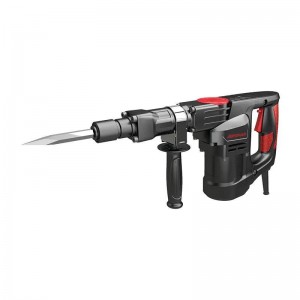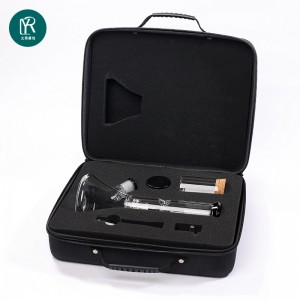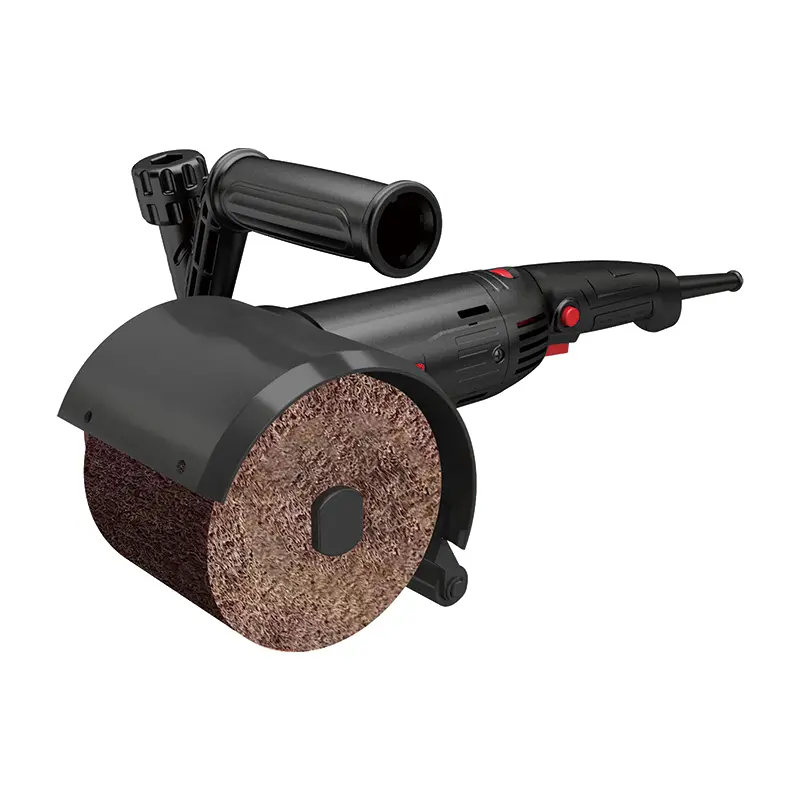In the professional construction field, efficiency and cost control have always been the core competitiveness. The traditional tool procurement model leads to equipment accumulation, capital occupation and maintenance burden, which limits the team’s mobility and profitability. The modular power tool system breaks this deadlock through innovative design, transforming a single device into a multi-functional work platform. This article will delve into how modular tools represented by demolition hammers and wire drawing machines can achieve functional expansion through head replacement technology, providing strategy-level solutions for modern construction teams.
First, breaking through traditional limitations: How does modular design address industry pain points
The core predicament faced by professional construction teams lies in the imbalance between the quantity of equipment and its utilization efficiency. Modular technology essentially redefines the way tools are used.
Resource waste caused by idle equipment
Research shows that the actual working time of traditional single-function devices only accounts for 15% to 30% of their life cycle. A large number of professional equipment continuously generate holding costs during transportation, storage and standby, including the occupation of storage space, maintenance and upkeep expenses, and interest on funds. The modular system can increase the equipment utilization rate to over 60% through functional integration.
Challenges of equipment adaptation under complex working conditions
In the face of diverse construction demands, traditional solutions require the configuration of various specialized equipment. The modular tools adopt a unified power platform and achieve functional conversion by quickly replacing the machine head, enabling a single device to handle various tasks such as dismantling, roughening, compacting, wire drawing, and cutting, significantly enhancing the adaptability to working conditions.
A systematic solution for operation and maintenance cost control
Maintaining the normal operation of multiple devices requires a significant investment of management resources. The modular system focuses maintenance on the power platform, simplifies the maintenance process, reduces spare parts inventory, and increases equipment management efficiency by more than 40%. A unified battery ecosystem (such as the 56V lithium battery platform) further reduces the complexity of energy management.

Second, Core Technology Analysis: The engineering implementation principle of modular tools
The outstanding performance of the modular tool system stems from precise mechanical design and electronic control technology, ensuring perfect coordination among various functional components.
Optimal design of the power transmission system
Professional-grade modular tools adopt a reinforced integrated transmission structure and ensure lossless torque transmission through high-precision spline connections. The core transmission components have undergone surface hardening treatment (with a hardness of HRC58-62), ensuring long-term stable operation even under the impact loads of dismantling operations.
Precise control of intelligent electronic systems
The built-in microprocessor continuously monitors the operating status and automatically adjusts the output parameters according to the characteristics of different machine heads. When switched to the hammer removal mode, the system optimizes the impact energy and frequency. When switching to the wire drawing machine mode, the rotational speed and torque output are precisely controlled to ensure that all functions perform at their best.
The technical implementation of the rapid connection mechanism
The patent quick-change system adopts a dual locking mechanism, which synchronously connects with mechanical clips and electronic contacts to achieve the one-time completion of physical fixation and signal transmission. Its reliability has been proven through rigorous testing (≥10,000 insertion and extraction cycles), while ensuring that the operation process can be completed within 30 seconds.
Third, Economic benefit Reconstruction: Full Life Cycle Value Analysis
The value proposition of the modular tool system can only be fully presented through a full life cycle cost analysis, and its economic advantages increase with the intensity of use.
Structural optimization of initial investment
Compared with purchasing multiple single-function devices, the modular solution can save 30% to 50% of the initial capital investment. Take the configuration of a basic demolition hammer in combination with five types of functional machine heads as an example. It is only equivalent to the cost of purchasing two professional devices, but it can obtain six professional capabilities.
A significant reduction in the combined holding cost
In addition to the initial investment, the modular system continuously generates savings in aspects such as storage space (saving 60%), maintenance (reducing 40%), and energy management (unifying the battery system). Calculations show that within the three-year usage cycle of the tool, the comprehensive holding cost can be reduced by more than 35%.
Reduction in failure rate and downtime losses
The mean time between failures (MTBF) of high-quality modular systems can reach over 1,200 hours, which is approximately 25% higher than that of traditional equipment. When a single function malfunctions, it does not affect the normal use of other functions, significantly reducing construction delays caused by equipment downtime.

Fourth, Application scenario expansion: The practical value of modular tools
The modular design endows the tool with unprecedented adaptability, enabling it to demonstrate unique advantages in various construction scenarios.
Urban renovation and space-constrained scenarios
In space-constrained projects such as old city renovation and interior decoration, modular tools have solved the problems of equipment transportation and storage. The configuration of a single main unit in combination with multiple machine heads enables the construction team to efficiently complete various tasks in a narrow space, reduces the frequency of equipment entry and exit, and enhances on-site work efficiency.
Efficiency optimization of multi-trade collaboration
For comprehensive projects involving multiple professional trades, modular tools make cross-professional collaboration smoother. The team does not need to wait for the dedicated equipment to arrive. They can quickly switch the tool functions according to the progress of the process, ensuring seamless connection of each construction link and shortening the overall construction period.
Equipment flexibility for emergency response
In scenarios such as disaster relief and emergency maintenance, the portability and multi-functionality of modular tools hold special value. A single device can meet various emergency handling requirements, significantly enhancing the rapid response and on-site handling capabilities of the emergency team.
Fifth, future evolution direction: The intelligent development of modular tools
The integration of modular concepts and digital technology is opening up new possibilities and promoting the development of construction tools towards intelligence and systematization.
Continuous optimization of performance data
The new generation of modular tools has begun to integrate sensor networks and continuously collect operational data from each functional module. These data are used to optimize working parameters and, after connecting to the cloud platform, provide maintenance warnings and performance optimization suggestions through algorithm analysis.
Unlimited possibilities for functional expansion
Standardized interfaces provide a solid foundation for functional expansion, enabling the tool system to continuously expand its capability boundaries by adding dedicated machine heads. From foundation demolition, wire drawing operations to complex processes such as special cutting and drilling, all can be achieved through the same power platform.
Digital integration of tool management
Modular tools are gradually being integrated into digital construction management systems. Through exclusive identity recognition and usage data tracking, the comprehensive digitalization of tool positioning, status monitoring and performance evaluation is achieved, providing data support for equipment management decisions.
Conclusion: Redefine the value standards of professional tools
Modular power tool systems represent an important direction in the development of heavy-duty tools. It has resolved the core contradiction between efficiency and cost through technological innovation, upgrading professional equipment from a single-function carrier to a multi-functional working platform. For modern construction teams that pursue excellent operation, investing in modular tools is not only about equipment renewal, but also a strategic upgrade of operation models and management concepts. In the evolution of tools, modular design is becoming a driving force for defining the new standards of professional tools with its outstanding practical value and economic benefits.
Post time: Oct-23-2025

